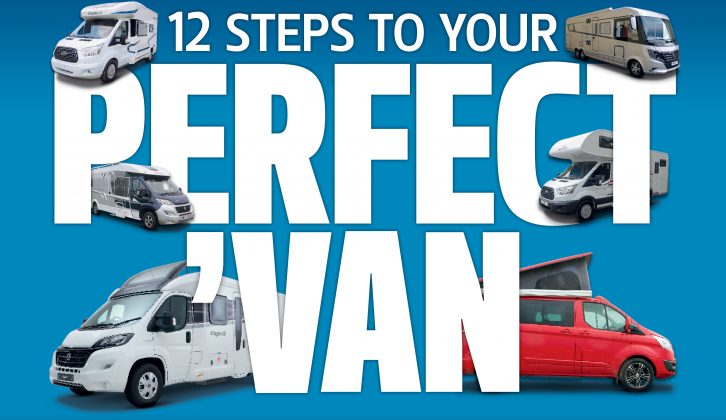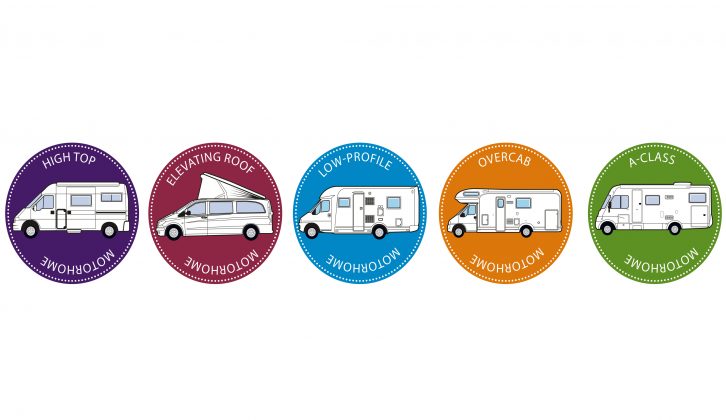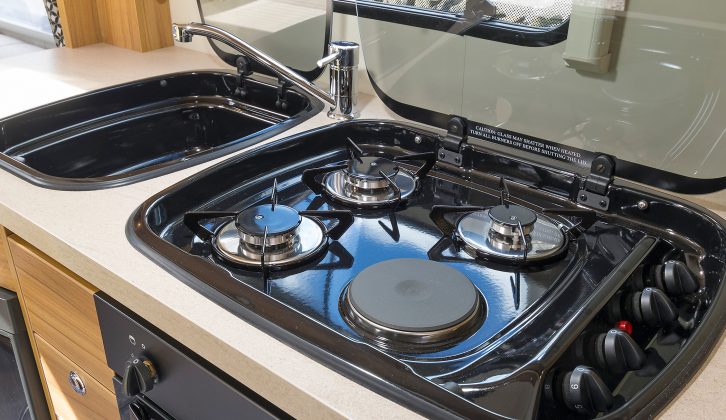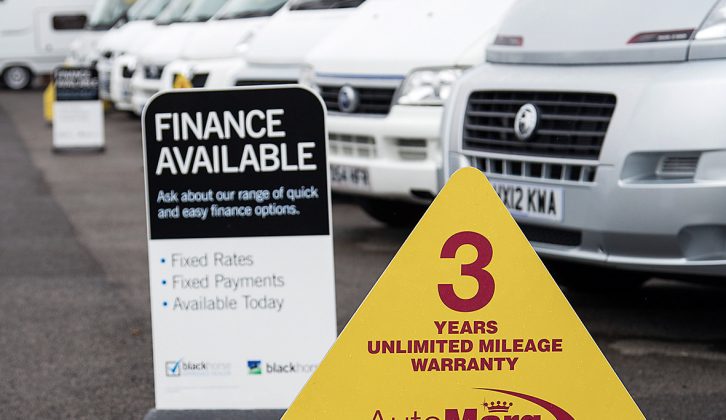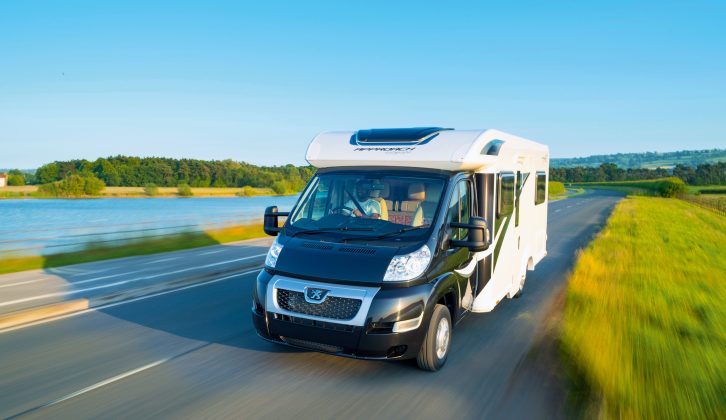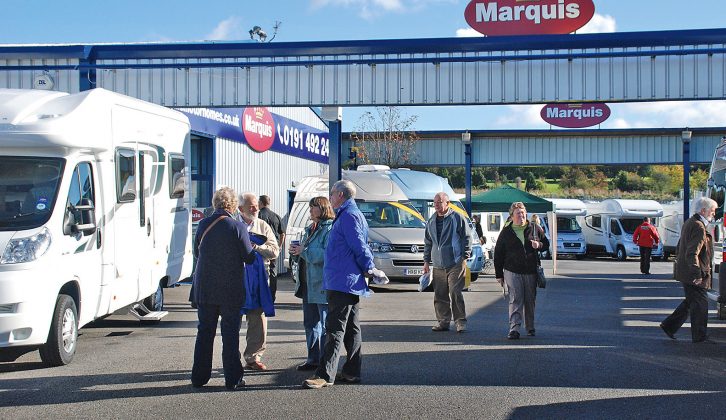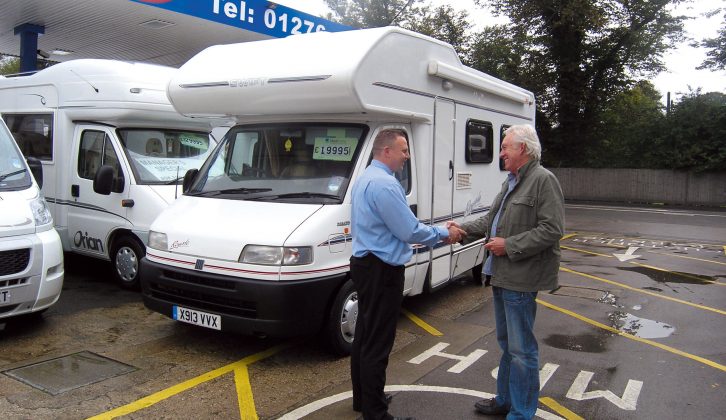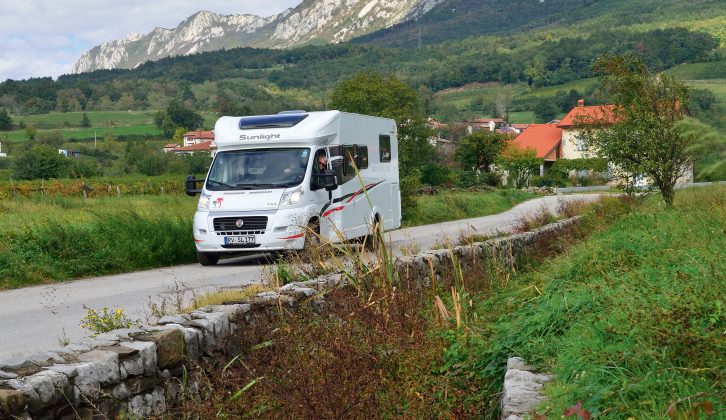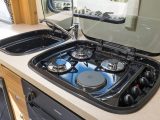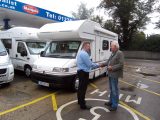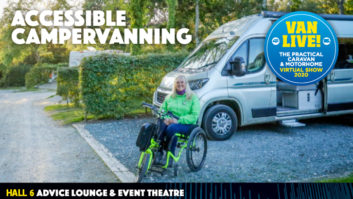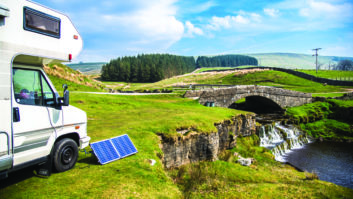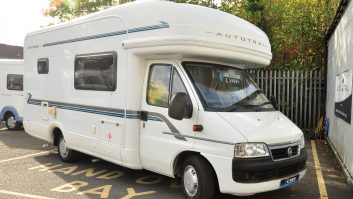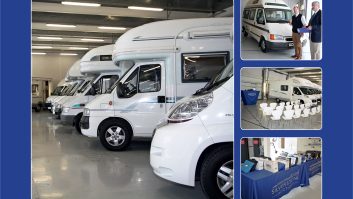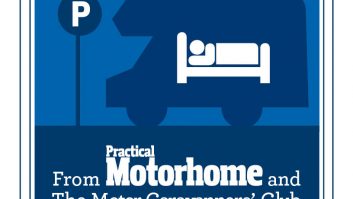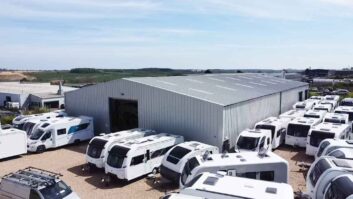Whether you’re new to motorcaravanning, or you’ve been touring for years and feel that now is the time to upgrade your ‘van, the experts at Practical Motorhome are here to help. If you are scouring the motorhomes for sale pages, we’ve put together a handy step-by-step guide to finding the dream ’van. With so much choice available, knowing where to start can be daunting, so let us guide you through the process.
1. Which kind of ’van do you need?
As the second image in our carousel shows, there are five types of new motorcaravan available to buy in the UK. Which one you choose depends on the kind of touring you intend to do. Most buyers choose low-profile coachbuilts: these come in many shapes and sizes and offer better insulation than van conversions, which are an ideal choice for those who want a smaller footprint. For superior comfort and insulation, go for an A-class.
There are many UK-based panel van converters and campervan converters to choose from. These firms offer buyers a high level of customisation as the vehicles are built to order. UK volume manufacturers build only low-profile and overcab coachbuilts. For an A-class ’van you’ll have to buy a Continental brand.
2. Find the layout that works for you
The first requirement to consider is the amount of berths you need – two, four or more – followed by how they’re arranged. Do you want the convenience of a fixed bed, or will you be happy to make up and break down a bed every day?
Popular fixed bed configurations include twin singles or double beds. Twin singles are very popular, as they offer couples the chance to use the washroom without disturbing their partner, while there are several forms of fixed double bed: French (located at the rear and offset, usually with a cutaway), transverse (across the vehicle) or island (located centrally, so there’s space around each side).
Overcab coachbuilt ’vans have declined in popularity as drop-down beds above the lounge have become more and more widespread in low-profile motorhomes. These can be manually or electrically operated. Other types of fixed bed include bunk beds for children. Fixed beds are mostly found in coachbuilt motorhomes, which are generally longer and wider than panel van conversions.
Other layout choices – or trade-offs – to make concern the washroom: do you want a fully featured space with a separate toilet or shower, or a ‘wet room’ – where these two areas are combined? Some ’vans even have ‘split’ washrooms – where the shower and toilet are located in the rear corner, with the handbasin in the bedroom.
3. Fix your price
Unless you’re coming to the pastime from a sizeable lottery win, you’ll be shopping from a particular budget. New motorhomes are available across the price spectrum, with prices starting from the mid-£30,000s all the way well into six figures. Impose a ceiling on your spending, including an allowance for extra touring equipment you may want to order.
The leisure vehicle industry works on a yearly update cycle: most volume-produced ranges see incremental improvements annually, although if buying in a year when there’s a base vehicle refresh or upgrade, such as 2015, then manufacturers will usually make considerable changes to the product line, perhaps with new ranges. With smaller converters, this process is more organic, with new models being added and existing ones tweaked on an ad hoc basis.
If you want to make your money go as far as possible, though, then consider waiting until the end of the season. With stock to clear before the following model year’s ’vans arrive, dealers often have to discount heavily to move the metal. Keep an eye on display adverts from leading dealers in the summer issues of Practical Motorhome magazine.
4. Decide how you’re going to finance it
As our annual Owner Satisfaction Awards shows, there are many ways of funding a motorhome purchase. Popular methods include using another vehicle like a car or touring caravan as part exchange, releasing equity from a property, or financing it through a dealership that can offer funding from finance companies. Some dealers even offer their own in-house finance services.
5. Identify your minimum spec
Draw up a list of ‘nice to haves’ versus ‘can do withouts’. This will allow you to easily spot the ranges – and trim levels within these – with the appropriate kit levels for your touring requirements.
‘Nice to have’ items include things like sat nav, Alde wet central heating, DAB radio, Bluetooth and USB connectivity, and dual-fuel hobs on the cooker. ‘Can do without’ will cover items like roof-mounted solar panels or air conditioning units – it’s all down to how much value you attach to these things.
In addition to carefully selected kit lists, you can boost the motorhome’s spec with bundles or ‘packs’ of popular options. And on models that cost more – especially true of larger coachbuilt or A-class ’vans – you can work through a comprehensive options list, where the sky really is the limit and you can personalise your vehicle to get exactly what you want.
6. Consider a dealer special edition
There are also dealer special editions – a volume-produced motorhome range manufactured specifically for a dealership. These will include features that dealers feel add value to a specific kit list, and they will be available at an eye-catching price. These can include extras on the base vehicle as well as items the dealership can fit on their own premises, for example reversing cameras, bike racks or water tank heaters.
Dealers of different sizes offer dealer specials – from large multi-site retailers like Marquis Motorhomes, to one-site concerns. They’re often based on popular and affordable ranges from manufacturers like Elddis and Swift. To find retailers that offer dealer specials, look for advertisements in Practical Motorhome.
7. Do your research
So you’ve identified the layouts you think will work for you – and discounted the ones that won’t – and have fixed a price range. Now you can start thinking about which manufacturers offer the kind of execution you’re looking for. If you’re not brand-centric – and our research suggests that badge loyalty may not be as important as people think – then a trip to a local multi-franchise dealer will be a good place to start.
You can also read reviews on Practical Motorhome or in the magazine, to get an idea of what’s out there, and what our testers think. Don’t forget the video page of our website and also the motorhome video reviews on the Practical Motorhome YouTube Channel. Another option would be to head for the Practical Motorhome forum and ask other members for their views on a particular range of ’vans.
If buying pre-owned, of course many on our forum might have experience of a certain models or ranges. And don’t miss our regular Second-hand Twin Test and Used ’Van Buyer features, which appear in the magazine and online.
8. Draw up your shortlist
Next, you need to draw up a shortlist of ’vans you would be happy to buy. Consider several models, so you can have a top choice and a baseline choice. This will help the comparison process when you get to see them in the metal. Even though many manufacturers follow the same floor plan, no two motorhomes are built exactly the same so have an idea of acceptable compromises in mind when you get to view the ’vans.
9. Compare the different models
If buying new, a motorhome show is by far the best way of viewing your shortlist. The ’vans will be under one roof and you can move from unit to unit, comparing similarities and differences and getting a feel for the one you’d be most happy to spend your holiday time in. Are you sure the layout will work for you?
You can also take advantage of special deals at the show – there are often price or finance promotions that run during the event, and retailers for the volume manufacturers usually offer sweeteners in the form of discounted options packs, too.
10. Arrange a test drive
Having made contact with a dealer or manufacturer at the show, you may well think you’ve found your dream ’van. The next stage is to arrange a test drive. When choosing a supplying dealer, it’s important that you go for one that’s easy to access. Buying a motorhome in Skegness if you live in Saltash will mean long journeys for servicing and warranty repairs, even if you’ve been offered a hefty discount or a bunch of accessories worth £1000. The exception to this is if you buy a new ’van from a smaller converter which has no dealer network and deals direct with the public. In this case, many owners will take their ’van up to the converter for servicing trips, staying on a local site while the work is being completed.
The object of the test drive is the same whether you’re buying new or pre-owned. You need to see how the vehicle drives, and whether you think it will be comfortable on the kind of trips you’re considering. If pre-owned, pay attention to the steering, the transmission and the engine, and ask to see a full service history.
11. It’s decision time
If the test drive has been a success and you’re happy to buy, then it’s time to sign on the dotted line.
It’s important to feel you can build a good relationship with the dealership or manufacturer you’re buying from – you’ll be visiting it for base vehicle servicing, habitation checks and warranty repairs, after all.
Make sure you’re aware of the warranties you’re getting: for new ’vans, it’s usually a three-year parts and equipment warranty, while the body integrity warranty will range between two years for a panel van all the way up to 10 years for a coachbuilt (restrictions apply). For pre-owned ’vans, shorter insurance-backed warranties apply.
12. Starting your touring adventures
Now it’s just a case of getting your insurance in place and arranging a date to collect the vehicle. For insurance, see the adverts here on this website and in Practical Motorhome magazine. In addition to insurance companies, the two major caravan clubs – The Camping and Caravanning Club and The Caravan Club – also offer their own motorhome insurance policies, too.
Before collection, a thorough pre-delivery inspection (PDI) is essential. The manufacturer or dealership should have prepared the motorhome for first use, with all services in working order, plus a thorough explanation of how the ’van works. This should normally take a couple of hours, depending on the complexity of the vehicle you’ve bought.
If, during the weeks and months following collection of your new ’van, there are things not working properly or that need to be rectified, then speak to the dealership or manufacturer straight away. A motorhome uses components from a variety of manufacturers; if one of these fails, your dealer will be able to fix it. If you have problems, then draw up a ‘snag list’ to be rectified.
So, finally, you’re all set for your touring adventures. Now all you need to do is read our travel guides for some destination inspiration – and don’t forget about our excellent, value for money Nightstops!
Draw up a list of 'nice to haves' versus 'can do withouts'
